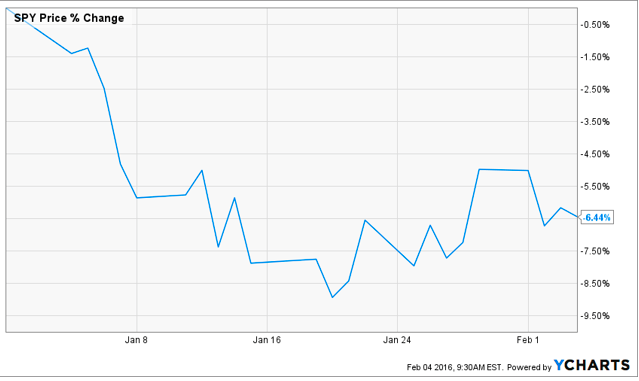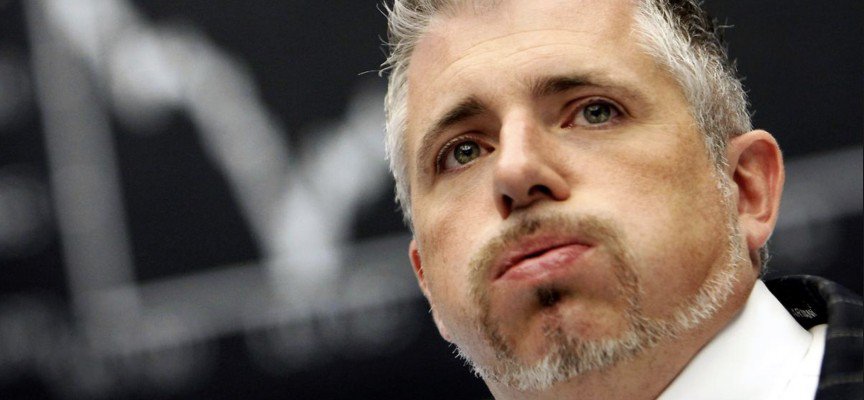Welcome to the Weathering the Storm issue of M&A Daily


The majority of the world’s stock indices topped out this month on Monday, February 1st, 2016 after a strong oversold technical bounce in price. Several indexes are now in the process of their first re-test of those multi-month lows which should act as support.
My belief is that the FED will abandon its plan to raise short-term rates in March 2016, given the “economic global contraction” in economic data including the Baltic Dry Index and troubled banking systems in the European Union.
The Baltic Dry Index below displays the major global contraction is now in process, it has now broken support at the 300 level and heading much lower. The Baltic Dry Index tracks the price of shipping raw materials across trade routes which makes it a good indicator of global economic activity. It is the pulse of World trade. The demand for goods is currently collapsing.
The BDI is one of the key indicators that experts look at when they are trying to determine where the global economy is heading. And right now, it is telling us that we are heading into a major worldwide economic downturn. In fact this trader warned of this happening on Nov 2015 in his report: The Collapsing Global Trade
 On the heels of six weeks of chaotic trading in markets, today the man who has become legendary for his predictions on QE, historic moves in currencies, and major global events, just warned that we’re now entering the most dangerous phase of the worst crisis in world history.
On the heels of six weeks of chaotic trading in markets, today the man who has become legendary for his predictions on QE, historic moves in currencies, and major global events, just warned that we’re now entering the most dangerous phase of the worst crisis in world history.
BLACK HOLES IN THE WORLD ECONOMY
Central Bank heads believe they are magicians who can wave their magic wand to create whatever economic conditions they desire. But the problem is that they are consistently wrong in their assessment of the economy so they don’t know what to do with the wand. Also, the wand is not magic but just bogus. And this is the dilemma of all central banks. They are given unlimited powers to manipulate monetary policy and to print money…
On the heels of the Nikkei plunging a jaw-dropping 11 percent in just 3 days, and the world banking system entering another round of panic, this is how frightening the global collapse has now become.
But first, a short-term note of caution…
From Investor’s Intelligence: “(The) BULL/BEAR ratio is (now) at multi-year lows and lower than September/October, 2015” (see remarkable 10-year chart below).

John Charalambakis is the Managing Director of Group, a boutique style asset and wealth management firm, which focuses on risk mitigation, capital preservation and growth through strategies that are rule based. Dr. Charalambakis has been teaching economics and finance in the US for the last twenty years. Currently he teaches economics at the Patterson School of Diplomacy & International Commerce at the University of Kentucky.
Financial Repression
“The outcome of financial repression is when the role of the markets is diminished because of the actions of central authorities, such as central banks.”

Fed: Central banks of the United States, ECB: European central bank, and BoJ Bank of Japan
Assets under management have skyrocketed from about 7% in 2007 for the U.S Fed, to over 20% as of the end of 2015, increasing 3 times. Over this time, the GDP did not equally increase 3 times. This increase eventually leads to a greater role of central authorities. Looking at Japan in 2007, they had about 20% of their GDP in their balance sheet, currently they have over 90%, meaning the role of the markets is diminishing and the role of central authorities is increasing, creating financial repression.
Gord asks John what assets people should invest in, in this era of financial repression that would create a store of value, which may not bring in a yield, but would preserve their money.
Gold – Intrinsic Value Assets
“I think the goal of any pension fund, institutional or private investor should be capital preservation. Assets should have intrinsic value. Assets that have intrinsic value such as gold or silver, historically have retained their value especially in times of crisis.” John mentions how the price of gold in 2009 rose from about $500-$500 to $1900 because investors were seeking a safe haven of intrinsic value assets. “There is not enough gold for everyone. Only 1/3 of 1%, a miniscule number, is invested in precious metals.” Hypothetically if every manager by the end 2016 would invest just 3% of their wealth into precious metals, the price of gold would rise to an estimated $2700. Growing demand and financial stress can, and likely eventually will, create a financial crisis.
Key Principles of the Austrian School of Thought
“Unfortunately risks and stresses are being built up and portfolios are suffering the consequences. People think because they have wealth on a financial statement, that wealth can be preserve. When the markets collide, that wealth is destroyed because it is paper wealth, not real wealth.”
Infastructure Investment
“Infrastructure investment needs to be financed, usually countries finance infrastructure through deficit spending, and that cannot happen due to big holes in their budgets.” John questions whether or not the internal rate of return justifies infrastructure. He doesn’t believe the environment is mature enough currently, due to the possibility of a looming crisis in the next couple years. This would push back infrastructure spending.
Preparing for a Possible Crisis
“Since we are in an era of financial repression you cannot expect the income from treasuries or CDs, explore all sources of income”
Equity markets are weak this year; where should you invest?
2 recent ideas for StW members; 2 more for everyone.
Sinovac gets a takeover offer.